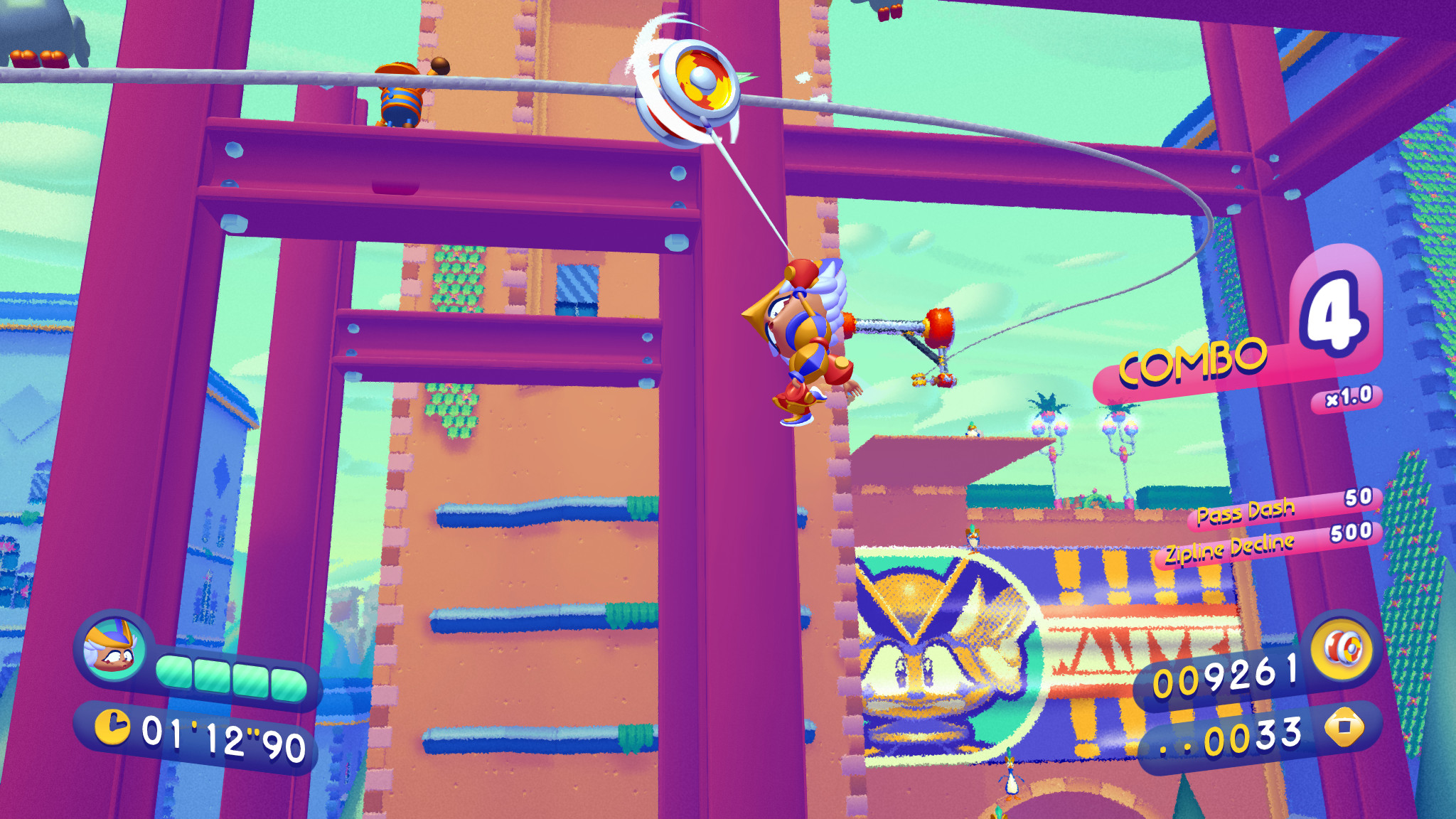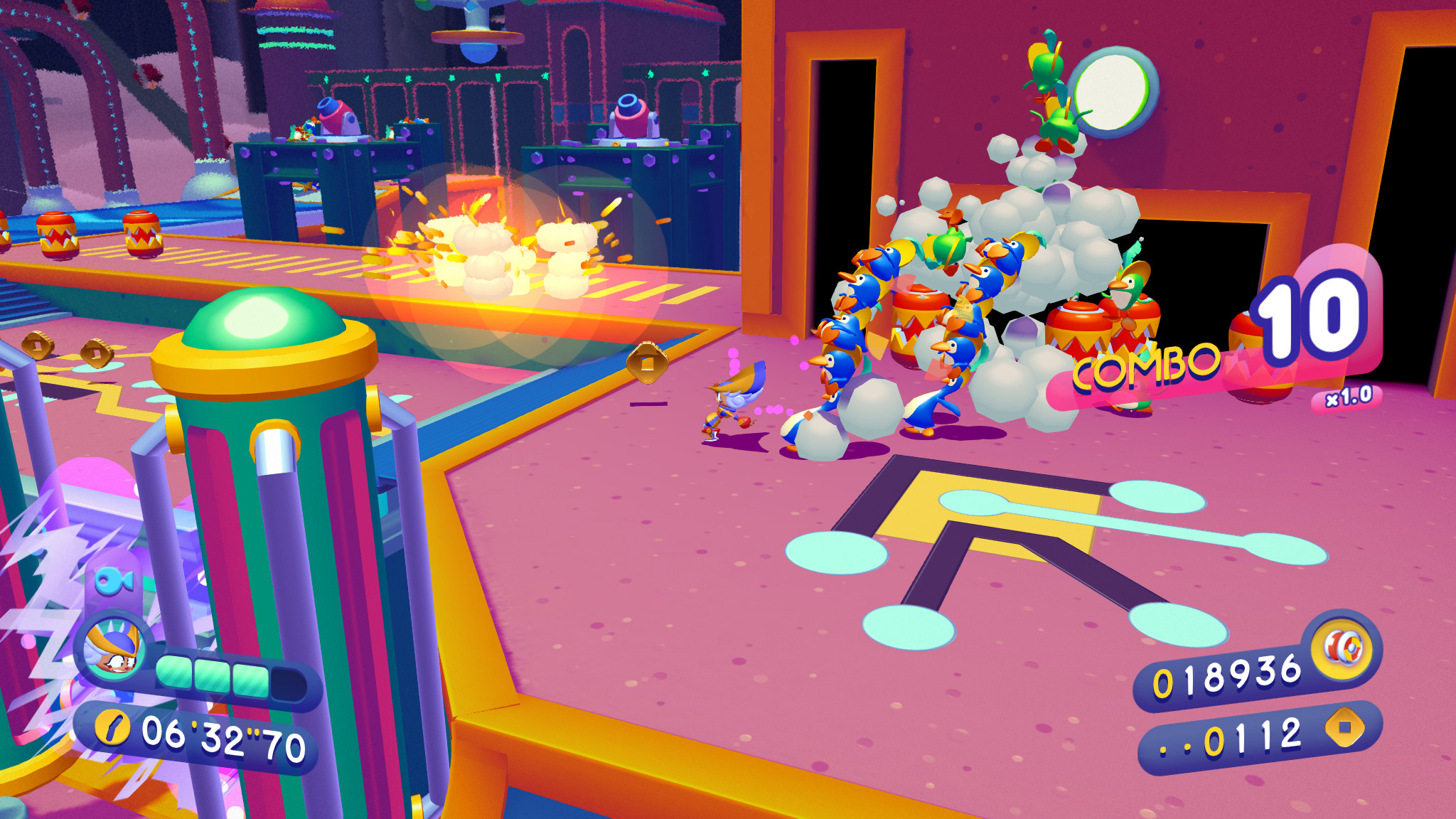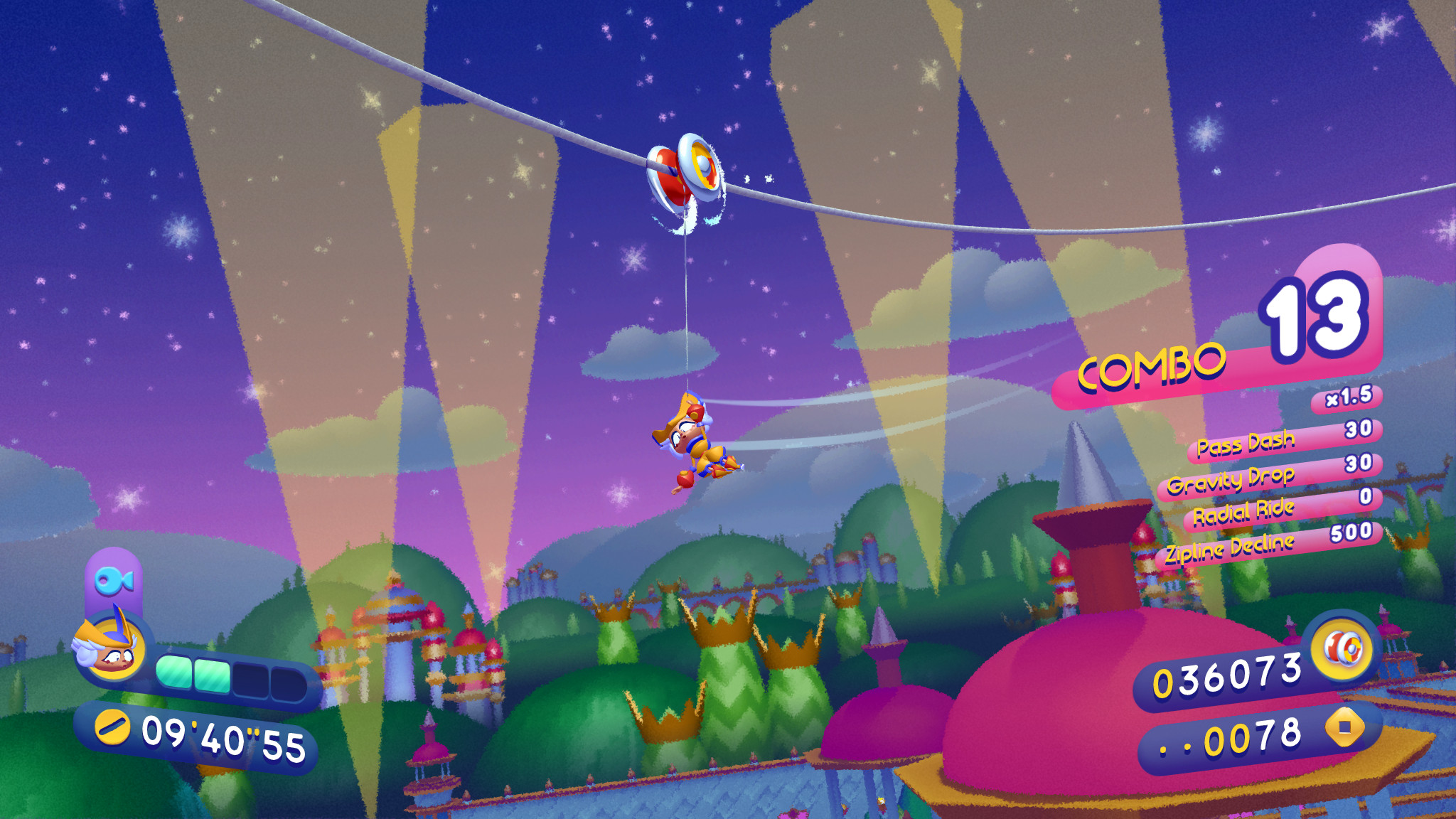Our Verdict
A creative fusion of familiar platformer elements that improves with time and investment, and proof that Evening Star is more than just the Sonic Mania crew.
PC Gamer's got your back
What is it? A colorful 3D platformer from much of the team behind Sonic Mania
Expect to pay £24.99/$29.99
Developer Evening Star
Publisher Private Division
Reviewed on Windows 11, Nvidia 3070 (Laptop), AMD Ryzen 7 5800H, 16gb DDR5 RAM
Steam Deck Playable
Multiplayer? Online Leaderboards
Link Official site
When Sonic Mania’s dev team reformed as indie studio Evening Star, it would have been easy for them to play it safe and deliver another speedy, Sonic-styled 2D platformer. Instead, Penny’s Big Breakaway is a deeply compelling, replayable experiment drawing equal inspiration from modern Sonic, 3D Mario and more than a bit of Tony Hawk’s Pro Skater. Just sub the skateboard for world-class yo-yo tricks.
This unfamiliar blend of mechanics does take some time to get used to, with a steep learning curve as you memorize each level’s racing line and figure out the optimal moves to navigate it. It’s good, breezy fun the first time through (around six hours long), but repeat playthroughs are where Penny shines brightest thanks to a trick-chain scoring system that channels the best of Tony Hawk, encouraging obsessive mastery of each map.
Clown about town
Without any looming franchise history, Penny’s Big Breakaway opts for a light and fluffy premise. On a strange cartoon planet, aspiring clownlet Penny aims to make it big at the Imperial Gala, a talent showcase dominated by incumbent sumo overlord Emperor Eddie. After her mischievous magic yo-yo strips the Emperor of his clothes (hate when that happens), Penny goes on the lam, platforming round the planet pursued by the Emperor’s Penguin guards, possibly the least intimidating antagonists in recent gaming memory.
That’s not a criticism. The penguins (which make up about 90% of the enemies encountered, bosses aside) are a silly, charming swarm of waddling critters that make everything feel like a big cartoon chase sequence. You’ll only lose a life if five manage to cling to Penny at once, and they’re easily shaken off by a quick dash or attack, but they’re ubiquitous enough—often pouring out of walls or pipes—to encourage maintaining momentum. Not quite speedrunning, but always a brisk jog, punctuated by a little razzle-dazzle showmanship.

Aside from a couple power-ups introduced later in the game, Penny’s entire moveset is available from the start, and it’s surprisingly extensive despite using one analogue stick plus jump, attack and ride buttons. Because the game has a much stronger focus on forward movement, it’s not as intricate as Mario Odyssey, but it doesn't need to be.
There’s no crouching or backflips that would kill momentum, but Penny has a lot of contextual ways to chain double-jumps, yo-yo swings, air-dashes and unicycle rides into an unbroken chain of momentum-conserving actions, each scored and multiplied by how long you keep the chain running. There’s a similar feel to Mario Odyssey’s faster segments when you’re swoocing through the air from point to point, but everything here is about keeping that pace high.

Your name in lights
Penny has a lot of contextual ways to chain double-jumps, yo-yo swings, air-dashes, and unicycle rides into an unbroken chain of momentum-conserving actions.
Why aim for score? For funsies, and because the theme of the game is showmanship. It’s possible to finish while barely engaging with the scoring mechanics, but every level tempts you to hit the score targets with concept art, three semi-hidden collectibles and three little sidequests to do for the chatty townsfolk around each otherwise-linear route.
It’s fun to gently meander around Penny’s world (including an industrial bathhouse zone, volcanic restaurant and cosmic library) and listen to every sassy bit of dialogue, but it’s hard not to spot the racing lines. Downhill stretches to maximize riding, gaps just narrow enough to sequence-break with a bit of airborne acrobatics, and optional bonuses that you can reach with just enough momentum. It’s immediately tempting to try to optimize, and by the end of my first run I was seldom just running from point A to point B anymore. Flashy is almost always faster.

For maximum bragging rights, each map can be cleared in a single combo. A feat I’ve still yet to pull off, but watching recordings of those who have is witnessing poetry in motion, like the scoring of Tony Hawk paired with Mario’s expressive, technical movement and Sonic’s flow-state momentum. And when you’re on one of those runs, the penguins suddenly become a menace; even one can break your combo, making them a smartly scaling threat depending on how committed you are.
One other interesting quirk is that there’s almost no camera control, potentially a perk depending on how aggravating you find manual camera-wrangling. The D-pad allows you to slightly pivot it, but it’s of little practical use. While you can control the game with a single stick and the face buttons on a gamepad, more advanced players can fling Penny’s yo-yo in any direction with the right stick, dashing and attacking parallel to movement. These advanced controls lead to the occasional moment where I misread the level’s perspective and missed jumps, but seem key to speedrunning.

A spectacular bonanza
Perhaps it’s nostalgia speaking, but Penny's art reminds me of Sega’s mostly forgotten arcade gem Bonanza Bros., with similar color palettes and worlds populated by chunky cylindrical people. There’s no hardware limitations forcing Evening Star’s hand here, just a love for the vivid palettes and simple construction of early Sega games. Even if Evening Star has left Sega, part of Sega has stuck with them.
Flashy is almost always faster.
Every world is blocked out in a clear, readable language of colors: One for basic platforms, one for sloped roads, one for moving elements, all shaded neatly, palettes shifting between environments. Between decent camera placement and smartly readable routes, I was easily navigating through the levels and their varied structures and map gimmicks.

Whether red rocky basalt pillars linked with icy glaciers, long sunset-shaded beaches with rolling dunes or vertically stacked industrial towers of moving platforms (each backed with their own catchy tunes, ranging from fairground ambiance to toe-tapping electro-swing), it’s all readable. Distant architecture also fades gracefully into the background thanks to an impressionistic depth of field effect, turning distant geometry into a watercolor backdrop.
Penny’s Big Breakaway has been a joy, and there's plenty more for me to learn, corners to cut and technical tricks to master. Through my first playthrough I did hit the occasional minor glitch, like rare semi-solid walls or spots where the camera gets wonky, but nothing a patch or two can’t hammer out. It’s also worth noting that the game runs like a dream on the Steam Deck at max settings. Unsurprising, considering it’s on Switch too, but good to know if you’ve a lower spec machine.
A strong, replayable and clever debut for a team that Sega really shouldn’t have let slip away.
A creative fusion of familiar platformer elements that improves with time and investment, and proof that Evening Star is more than just the Sonic Mania crew.

The product of a wasted youth, wasted prime and getting into wasted middle age, Dominic Tarason is a freelance writer, occasional indie PR guy and professional techno-hermit seen in many strange corners of the internet and seldom in reality. Based deep in the Welsh hinterlands where no food delivery dares to go, videogames provide a gritty, realistic escape from the idyllic views and fresh country air. If you're looking for something new and potentially very weird to play, feel free to poke him on Bluesky. He's almost sociable, most of the time.


